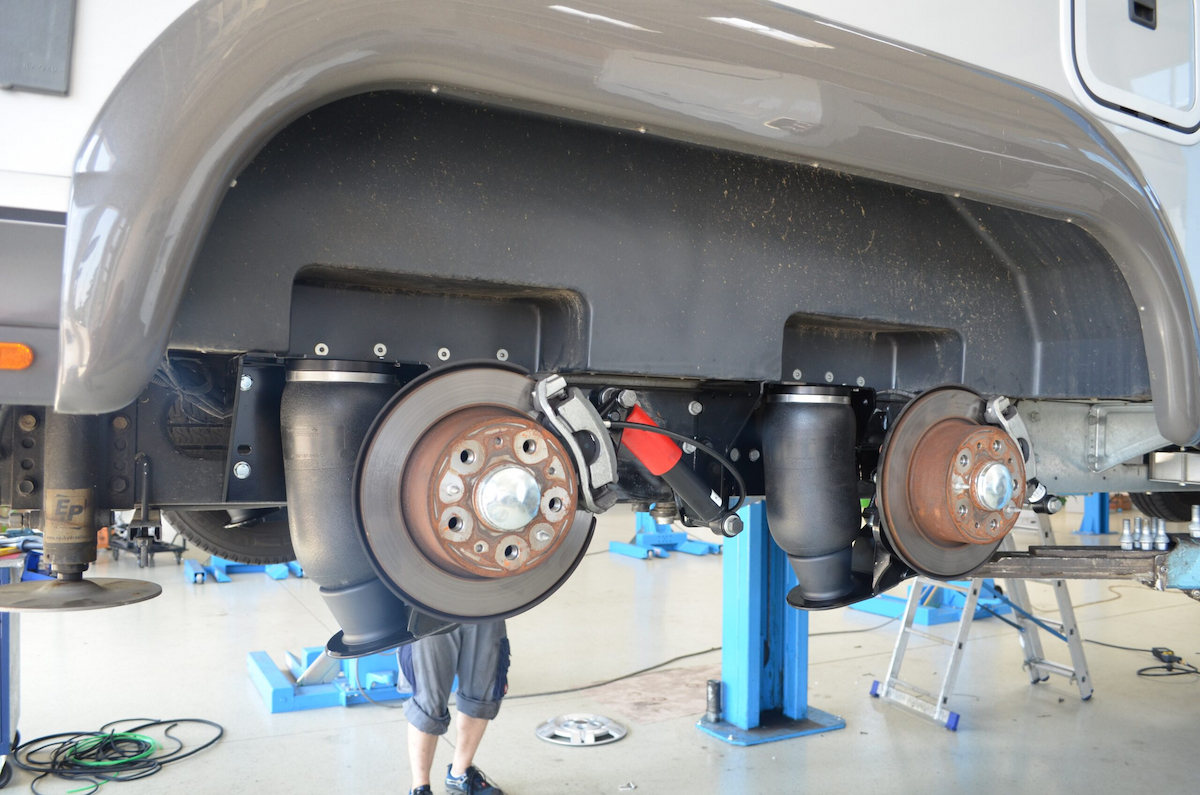Utes are versatile, grunty, spacious and can be modded to meet individual needs. While upgrading the suspension gets you better handling, especially off-road, load assist kits added to the rear axle increase the ute’s work credentials, and up safety when carrying heavy and bulky loads on trays and in tubs. These remove embarrassing rear axle squat when utes are loaded to the brim. They also level out the vehicle regardless of how weight is distributed, bringing even traction through all four wheels.
Air Suspension Basics
Load assist kits are just one example of air suspension that replaces traditional metal coil springs with rubberised, heavy-duty air bags. The tech has been around for ages, first in military vehicles, then heavy commercial trucks, often on both the front and rear axles. The main purpose is to evenly distribute weight and maximise tyre contact with the road, enabling safe transport of heavy loads regardless of road conditions. That same technology now comes in the form of load assist air bags to aid utes, light trucks and vans. You can haul any gear, and have the tub or tray loaded (to legal height and weight limits) without worrying about slipping tyres or loose handling.
What Goes into Load Assist Kits
Load assist kits work by using compressed air to lift or lower the vehicle. This can be done at either the left or right wheels separately or together. Basic kits consist of one double-convoluted airbag above each wheel, Each airbag can safely handle over 1000 kilos and be pressurised to 750 psi. As mentioned, air bags or bellows replace coil springs. For dampening purposes and controlling spring compression and rebound, vehicle owners can use the stock shocks, or go with calibrated shock absorbers designed specifically for the make and model.
Bags are connected to the chassis via heavy-duty metal top plates and brackets, ensuring they stay in place, and the air is fed through tanks and compressors via valves and steel braided air lines. If you want full adjustability also consider management systems to get the most of the air bellows. These can be driver-operated, with switches mounted in the dash, or automated and consist of control units and height and pressure sensors that automatically level the vehicle, by inflating or deflating load assist air bags as needed.
Benefits They Provide

Load assist kits are attached to the rear axle on commercial light trucks and help in several ways. They enable vehicles to cope with heavy or unevenly distributed loads, and increase the safe loading capacity, so you can transport more gear and goods in a single go. The parts additionally level out the vehicle, leading to more responsive steering and increased stability, especially over rough roads.
Often overlooked benefits are the improved ride quality ironing out road imperfections (potholes, speed bumps, uneven tarmac), better visibility at night and during overcast weather with head and fog lights staying level, and reduced tyre wear, especially at the back.
A professionally installed rear airbag suspension kit then offers loads of convenience, improved safety, better handling and less wear. The parts pay for themselves by reducing the likelihood of accidents, issues with loads, and reduced vehicle wear.
What to Look For
Choosing modifications and upgrades for any vehicle parts requires careful consideration, whether this is upgraded brakes, more efficient cooling systems, or suspension changes. For load-assist airbags and accompanying equipment, compatibility is your first concern.
Airbags need to be able to inflate to the required pressure to hold heavier gear and increase the legal loading weight. This also keeps laden vehicles stable over uneven ground and in turns, without the risk of bottoming out.
Parts also must fit factory mounting holes without additional modifications to mounting brackets, that can compromise safety or functionality. Moreover, hoses and air lines must be of the right length.
Lastly, consider quality brands that have done their research and real-world testing across different vehicle brands. Load assist kits can be fitted as is to most current utes, but opting for more control via in-cabin control or automated management systems significantly improves functionality in different use cases. For anyone dividing driving time between unpaved roads and tarmac, this is an addition that cuts out a lot of hassle.
Compared to Other Suspension Setups

Load assist kits are tailored for a specific vehicle type (utes, vans, light trucks, and trailers) with weight distribution and levelling the vehicle the main goals. If you’re after a more plush ride and the ability to change handling settings on the go, consider full air suspension kits sitting above all four wheels and a complementary management system to take out the guesswork of pressurising each air bag to the right volume and pressure.
Commercial vehicles, utes and 4WDS can have lift kits installed if more ground clearance is what you’re after. These are simpler, consist of fewer parts (therefore cheaper) and can raise the vehicle by up to 150mm, depending you what you choose. The main downside is that they’re fixed at a certain height, and don’t offer the adjustability that comes with an airbag suspension kit. Plus, they won’t do much to deal with uneven weight and loads at the rear axle.
